by John Penlington, retired broadcast journalist
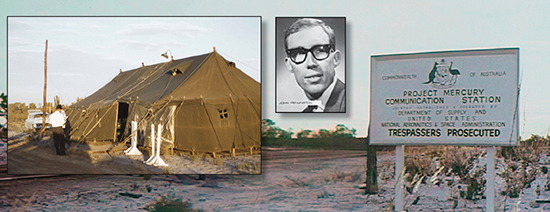 |
John Penlington was at Muchea to cover the flight of Friendship 7 for the ABC.
Photo of John courtesy of the ABC. Media tent photo by John Penlington. Background image: Entrance gate, from a Department of Supply film. |
After a 9:47 am lift-off from Cape Canaveral, Florida, it took John Glenn barely 45 minutes to pass over Perth on the dark side of the globe. Awaiting him there was a brilliant welcome – literally. Perth was ablaze with lights. The build-up to this first orbital flight around the earth by an American astronaut sparked a surge of involvement among the people of Perth, one of the most isolated state capitals in the world. It seemed anyone who had an outside light they could turn on, did so.
On the northern outskirts of Perth, the well-rehearsed team at Muchea Tracking Station locked on to Friendship 7 by radar as it climbed above the horizon. Soon after, John Glenn was talking with his fellow Project Mercury astronaut Gordon Cooper, who’d been positioned at Muchea to be Glenn’s Capsule Communicator.
A small media group was assembled in a big army tent erected in the tracking station’s grounds.
 |
The media tent at Muchea was erected adjacent to the T&C Building.
Photo: John Penlington. Image restoration: Colin Mackellar. |
As a young ABC reporter, then aged 23, I was there to make regular short reports about the flight during radio and TV programme breaks. I’d equipped myself with a paperback book about Project Mercury as a good backgrounder.
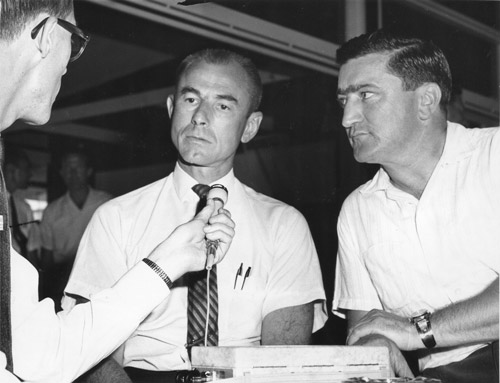 |
John Penlington (left) records an interview with Muchea’s Flight Surgeons, Dr Ed Beckman (centre) and Dr Warren Bishop.
Photo with thanks to Mrs. Joy Hendly-Jensen. Scan by Glen Nagle. |
Plus I had an excellent briefing from the station’s director Lewis Wainwright.
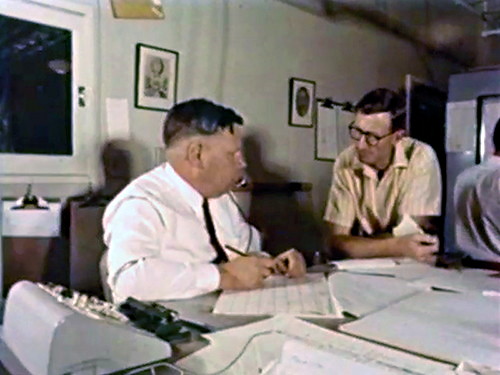 |
Gus Pugh (left) and Station Director Lewis Wainwright at Muchea.
A frame from Department of Supply footage.
|
The media was not allowed to hear John Glenn’s conversation with Muchea during each pass, but a government official in the control room had a line to the army tent to report progress. The only restriction was that we were asked not to broadcast during a pass.
However, my line to the ABC studios in Perth was kept open and monitored by the duty announcer. The agony of wanting to know whether Glenn could see the lights of Perth was intense. I can remember that thrilling moment as if it happened seconds ago. The official told us the lights had been seen. I said: “He’s seen the lights.” The announcer – Ramsay MacLean – opened his microphone and said: “John Glenn has seen the lights of Perth.” I’m sure that brought great delight to many living rooms in Perth that night.
Years later I listened to an edited version of the Glenn – Cooper chat in a NASA documentary about Friendship 7 which you can hear below.
Spaceflight has always been a potentially hazardous activity and that night spent at Muchea gripped us all with both excitement and fear.
We were not told that a yaw attitude jet clogged at the end of Glenn’s first orbit, forcing him to abandon the automatic control system and use the manual electrical fly-by-wire system.
During Friendship 7’s fiery re-entry into the earth’s atmosphere, radio contact with the space capsule was lost. Was this to be expected, we wondered in that army tent, or had something terrible happened?
Relief at last with the news that the capsule had re-entered intact and splashed safely into the ocean to await recovery.
Two decades later I happened to be in Washington DC, so I went along to the National Air and Space Museum and stood beside Friendship 7, astonished at its smallness. Peering inside, I marvelled at how a man could be harnessed into that tiny cabin, and blasted into space on top of a massive rocket, to orbit the earth for a flight of just under five hours during which he reached speeds in excess of 17,000 miles per hour.
Muchea Tracking Station had a short life, but a very useful one. My nights there covering two spaceflights are now a distant though much treasured memory.
– John Penlington, 14 February 2016.
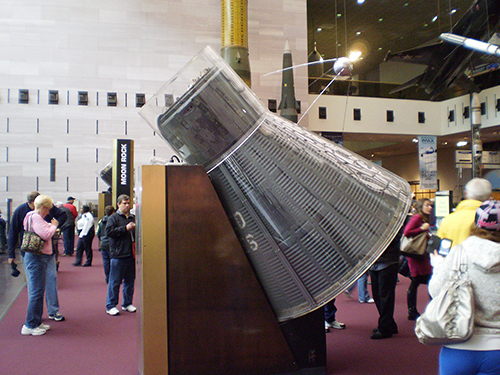 |
The Friendship 7 capsule at the National Air and Space Museum, Washington, in 2011. Photo: Colin Mackellar. |
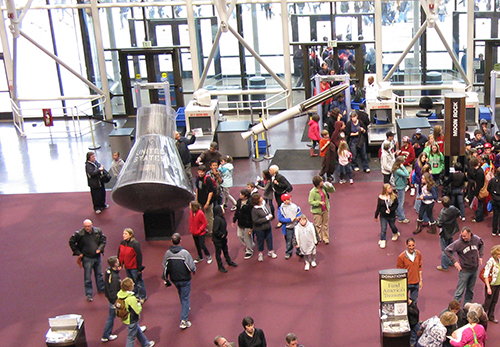 |
The Friendship 7 capsule at the National Air and Space Museum, Washington, in 2011. Photo: John Sarkissian. |
Back to
the main Muchea page.





